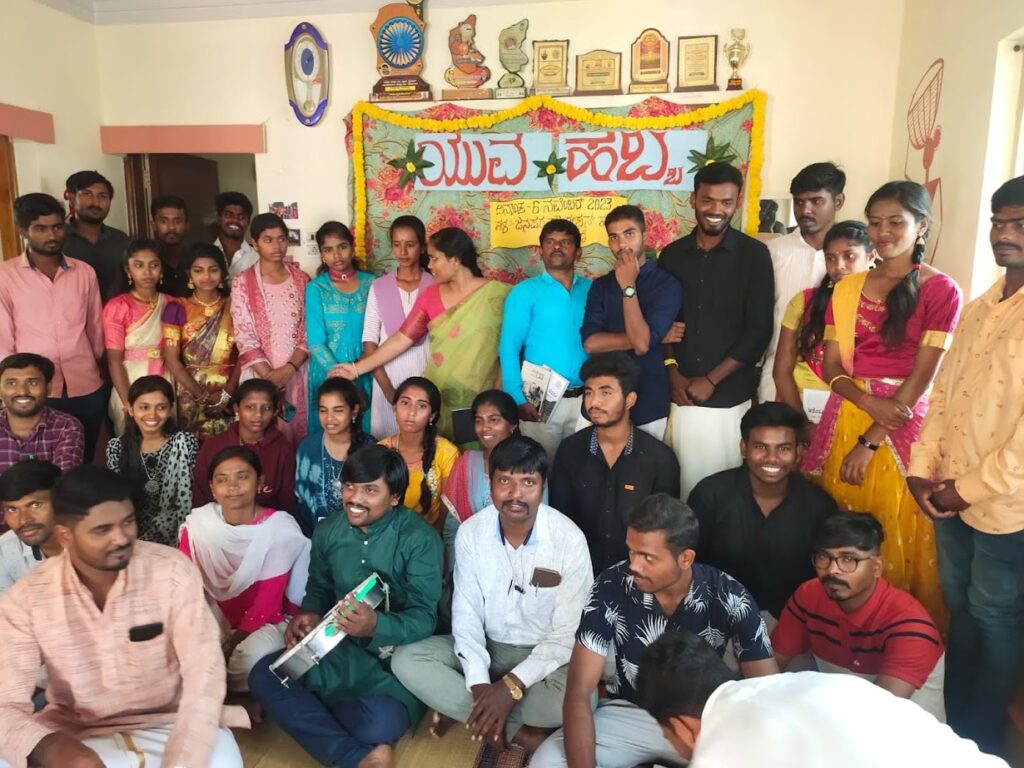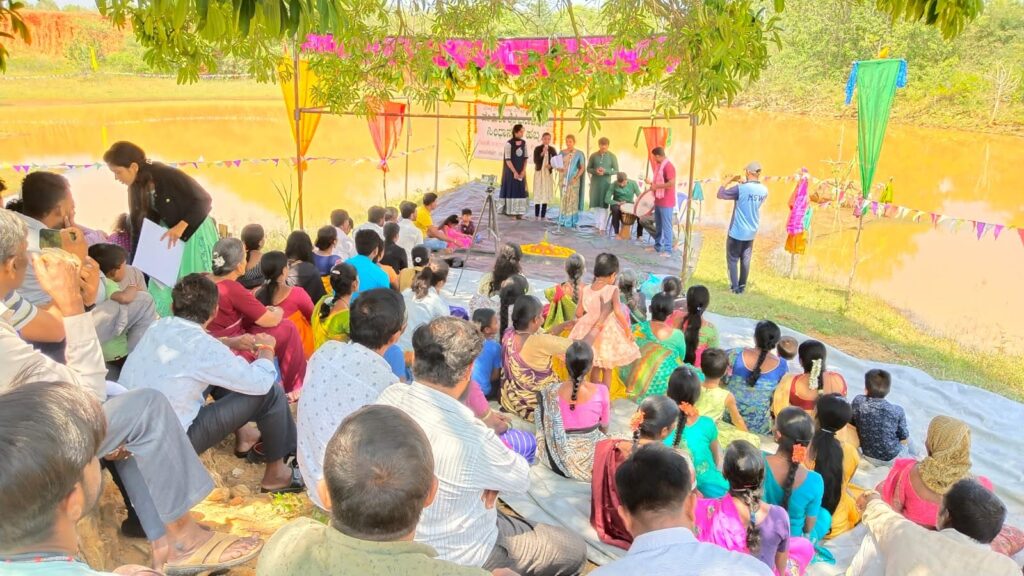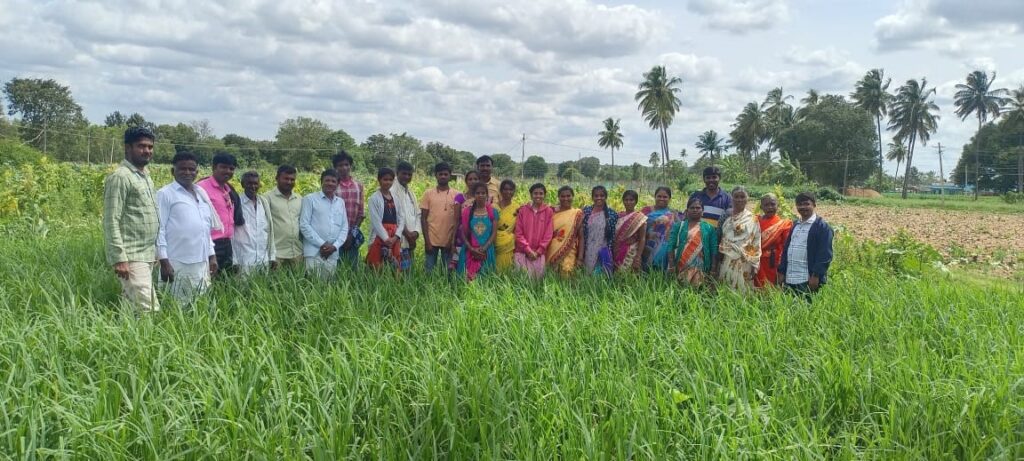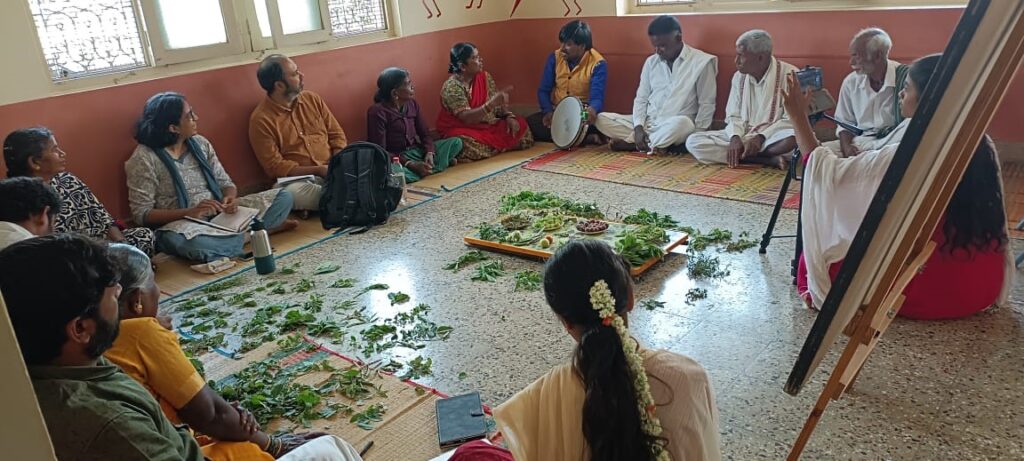Land based Livelihood for a Sustainable Future in Chinthamani Taluk
CHINTHANA Foundation: Progress Report on “Land-based Livelihood for a Sustainable Future in Chintamani Taluk”
Project Overview
Since September 2021, CHINTHANA Foundation has been implementing the project “Land-based Livelihood for a Sustainable Future in Chintamani Taluk” with the support of the Association for India’s Development (AID). The project is operational across 20 Gram Panchayats in Chintamani Block, aiming to rejuvenate self-reliant indigenous agricultural systems and ensure nutritional food security by improving soil health.
In collaboration with Balli Balaga — a youth collective in Chintamani Taluk, Chikkaballapur District — the foundation focuses on three core objectives:
Enhancing local communities’ access to and benefits from government livelihood and social security schemes
Promoting sustainable agriculture for improved livelihoods
Building skills and awareness among rural youth
Focus Areas and Activities
1. Sustainable Agriculture and Millet Promotion
Target:
Encourage at least 200 farmers to cultivate millets and other dryland crops during the Mungaaru (pre-monsoon) season.
Key Activities:
Village-level volunteer meetings for millet promotion
Pre-monsoon awareness meetings across project villages
Identification of interested farmers
Procurement and testing of millet seeds (sourced from previous year’s growers)
Seed grading and germination tests
Seed distribution and field-level support
Organic manure workshops and demonstrations
Assistance in applying for crop insurance
Dissemination of drought relief information
State, district, and taluk-level drought advocacy
Millet crop festival and documentation
Outcomes:
220 interested farmers identified across 40 villages in 11 GPs
1,518 kg of millet seeds procured: 1,201 kg saame (little millet) and 317 kg navane (foxtail millet)
592 kg of graded seeds distributed to 98 farmers covering 103.5 acres (87 acres of little millet and 16.5 acres of foxtail millet)
38 farmers insured their ragi crop due to team motivation
41 farmers sowed seeds on 38 acres: good crop in 13 acres, average in 6.5 acres, and crop failure in 18.5 acres due to drought
Farmers adopted organic composting practices
Exposure visits for farmers and youth to millet processing units in Mysuru, Hubballi, and Srinivasapura
Over 220 participants attended Women Farmers’ Day organized at Mylapura
Crop details logged in the Kobo Collect App
Impact:
Agriculture department officials visited successful millet plots in Dhanamettinahalli and Mylapura
Improved knowledge and practice of low-water sustainable farming among farmers, including youth and women
Some farmers independently took up millet cultivation as a result of last year’s awareness
2. Backyard Poultry Development
Target:
Support 50 new families with backyard poultry, including follow-up for poultry shed construction under MGNREGA.
Key Activities:
Village-level community meetings
Selection of suitable beneficiary families
Distribution of chicks (prioritizing women-headed, single, and differently-abled households)
Training and workshops on poultry farming and healthcare
Village-level veterinary vaccination camps
Monitoring and support for previous beneficiaries
Outcomes:
30 families from 7 villages received 5 chicks each (150 total)
127 chickens survived; 154 eggs produced and consumed or hatched (72 chicks)
20 families across 3 GPs received approval for poultry sheds under MGNREGA
Impact:
Example: Nethra from Domalapalli earned ₹10,000 through poultry last year and supported another woman, Bhagyamma, with 5 chickens
Higher survival rates due to vaccination and improved practices
3. Kitchen Gardens
Target:
Work with 100 families to revive and expand kitchen gardens with a diverse range of greens, vegetables, and fruits.
Activities:
Identification of interested families
Community meetings and seed distribution
Participation in district-level meetings on school kitchen gardens
Outcomes:
30 families initiated kitchen gardens
2 schools selected for garden interventions
Impact:
Activities have commenced this year; last year’s gardens were lost due to heavy October–November rainfall
4. Farmer Facilitators Program
Target:
Train 10 farmer facilitators (both men and women), each mobilizing 5 other farmers — reaching 60 farmers with sustainable agriculture practices and support for scheme applications.
Key Activities:
Regular training and meetings on sustainable farming
Creation of moisture pits on a minimum of 1 acre per facilitator
Exposure visit to expert farmer Prabhakar’s land in Mulbagal
Training on ragi transplantation (nati system) at GKVK, Bengaluru
Assistance with MGNREGA applications for moisture pits
Poultry support for interested facilitators
Outcomes:
Farmer facilitators formed peer learning groups
A handbook was developed with support from KVK and agri-allied departments
2 facilitators constructed moisture pits under MGNREGA; 5 began poultry farming
9 facilitators sowed crops this monsoon — 2 using the nati method, 2 used mixed cropping
Facilitators adopted and promoted various organic manures
6 facilitators submitted MGNREGA applications for land development
Impact:
7 facilitators harvested good crops; 2 faced losses
Some have now planted hingaaru (post-monsoon) crops
Farmer networks strengthened and expanded
Increased awareness and demand for drought relief among youth farmers
5. MGNREGA Convergence and Implementation
Focus:
Leverage MGNREGA to support agricultural activities, nursery establishment, and drought-resilient practices.
Key Activities:
Follow-up on pending works from the previous year
Community mobilization to recover pending material costs
Registration of 20 individual and 1 collective work in 5 villages under 4 GPs
Stakeholder meetings in villages
Demands raised in Gram and Ward Sabhas for next year’s action plans
Capacity-building sessions for PDOs, elected members, and Grama Kayaka Mitras through SIRD
Outcomes:
₹38,532 released for last year’s pending material costs
Special order issued for moisture pit construction under MGNREGA in Chikkaballapur
40 farmers identified for first-phase implementation
24 farmers completed moisture pits; ₹2,18,988 paid for 693 man-days (₹1,24,212 material cost pending)
26 families in Domalapalli resumed lake restoration under MGNREGA
Impact:
Special MGNREGA order secured due to advocacy efforts
Gram Panchayats prepared and approved local action plans
Communities gained confidence to demand entitlements
MGNREGA provided vital income in a drought year
Moisture pits improved drought resilience and land productivity
Conclusion
CHINTHANA Foundation, in partnership with Balli Balaga, has made significant progress in promoting sustainable livelihoods through millet cultivation, poultry, kitchen gardens, and community mobilization for MGNREGA. Despite challenges like drought and delayed rainfall, the project has helped empower farmers, especially women and youth, to adopt resilient practices and access government support systems. The groundwork laid in these villages continues to grow stronger, offering a replicable model for sustainable rural development.
Post Tags :
Share :



